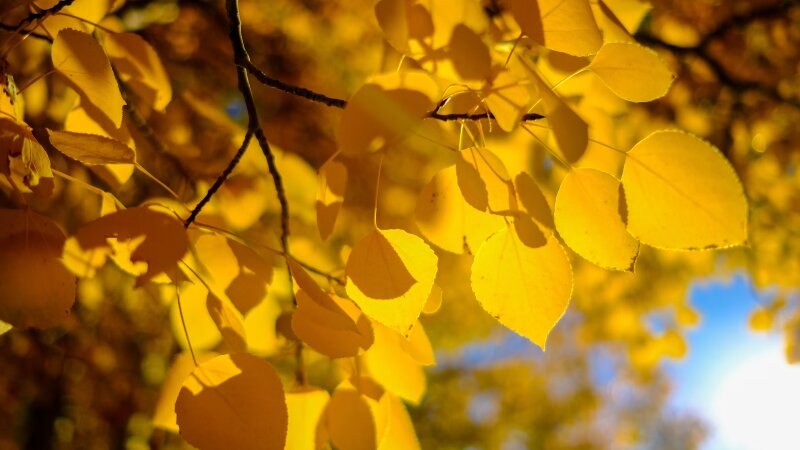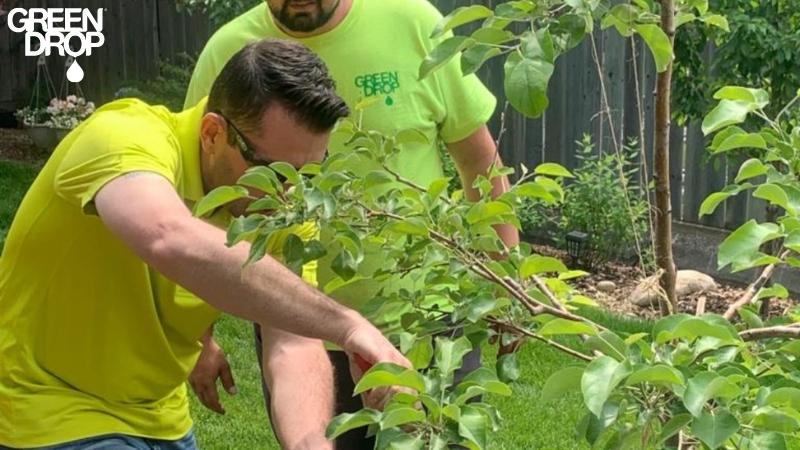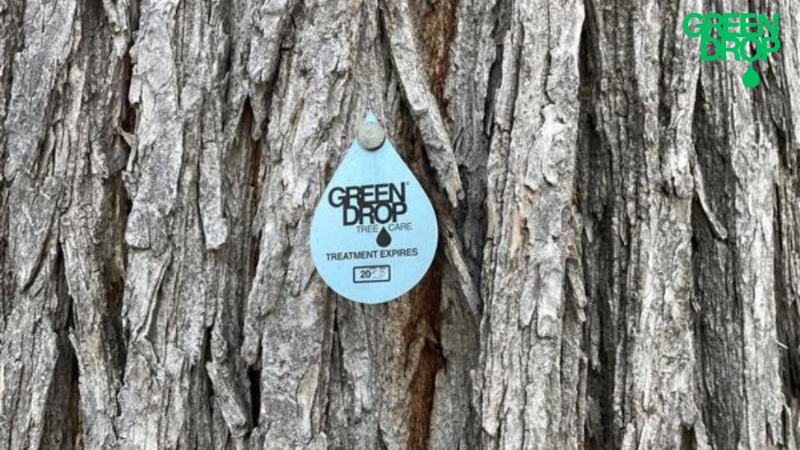What Is Bronze Leaf Disease?
Reading time: 5 minutesDid you know that trees can get sick too? Like all living things, trees are susceptible to bacteria, fungi, and other unwanted microscopic pathogens that cause disease. Keeping your trees healthy starts with understanding these conditions and what you can do about them.
Come with us on a deep dive to explore the serious but subtle Bronze Leaf Disease (BLD) and learn how to protect your trees with the help of our ISA-certified arborists.

About Bronze Leaf Disease (BLD)
Bronze Leaf Disease is a fungal infection that spreads from one tree to another via airborne spores. Contrary to conditions like Oak Decline or Oak Wilt that require a pest host to replicate, BLD can quickly move through multiple trees with only rain, wind, and warm temperatures to help it along.
Unfortunately, Bronze Leaf Disease is fast-moving and difficult to detect. If leaf bronzing occurs in the fall around the time of normal leaf drop, it could get missed entirely. When left untreated, this condition can be fatal for trees within just three to five years of the initial infection.
What Trees Are Affected by BLD?
Bronze Leaf Disease only affects poplar trees. Not all poplars are vulnerable to the condition though. The specific varieties that can be infected with BLD include:
- Tower poplars
- Balsam poplar
- Trembling aspen
- Swedish columnar aspen
- Eastern cottonwood
Of these, Swedish columnar aspens and Tower poplars are the most vulnerable.
The History of Bronze Leaf Disease in Western Canada
Bronze Leaf Disease was spotted in Alberta for the first time in 2003 and in Calgary in 2007. This makes it relatively new to Western Canada compared to other tree diseases like Dutch Elm Disease (DED), which was initially confirmed in Ontario in 1946. Since then, the number of poplar trees infected with BLD throughout the region has increased with each passing year.
Because poplar trees serve such an important aesthetic and agricultural role in Western Canada, it’s crucial for home and business owners in the area to learn how to identify, manage, and prevent Bronze Leaf Disease. This reduces the number of poplars that will spread the disease to others before succumbing themselves and helps to preserve valuable trees at every stage of growth.
Symptoms of BLD to Watch Out For
Wondering what Bronze Leaf Disease looks like? Even though this stealthy invader can be extra sneaky when making its way around your beautiful trees, the City of Calgary lists several symptoms to watch out for, like:
- Progressing leaf dieback
- Orange-brown or reddish-brown discolouration at the edges of leaves
- Browning of the wood underneath the bark of infected branches
- New leaves look underdeveloped
- Leaf veins stay bright green
Generally, these signs are most visible in the late summer months and the beginning of fall. It can be easy to miss, though, since only a few leaves may be affected at first, and it might initially just look like leaves turning colours in the fall.

Top Tips for Preventing BLD
Dealing with Bronze Leaf Disease after the fact is a lot harder than taking steps to prevent it. In fact, there are no approved compounds that can be used to treat a tree that has already been infected past the most external branches. At this point, removal is necessary to prevent the spread of the disease to other trees.
However, there are several things that you can do to help keep BLD at bay and treat early symptoms, including these simple yet effective tips:
- Maintain good pest control and tree maintenance practices. Healthy trees are less susceptible to succumbing to disease and stand a better chance of warding off Bronze Leaf Disease for at least as long as it takes for you to remove infected branches. Keep your trees watered and fertilized to give them a solid defence against BLD and other unwanted tree conditions.
- Prune diseased trees as soon as possible. See a branch with leaf dieback or bronzing? Grab the shears. The longer BLD is allowed to remain on a tree, the higher the chance it will reach the point of no return and infect other trees in the process. You’ll want to prune affected parts as soon as you notice them.
- Dispose of infected material properly. The Albertan County of Wetaskiwin recommends putting diseased branches, leaves, and other materials in a tightly sealed garbage bag. Then, you can throw it away with your other trash. You can also bury the material or take it to the landfill yourself. It's important to never recycle, compost, or burn infected tree branches since this can quickly contribute to the spread of BLD when spores get released into the air and are blown away by the wind.
Green Drop’s Comprehensive Tree Health Care Services
Do you love the look of a well-maintained landscape? At Green Drop, we treat your beautiful trees like they’re our own. With our team of qualified arborists and an extensive catalogue of customizable tree health care services, we can help you prevent and treat serious tree diseases, including:
Tree Pruning
Our tree pruning services are designed to keep your trees healthy and looking beautiful without the hassle of having to do it yourself. We remove infected, broken, and otherwise damaged branches to manage disease and promote even growth. Our arborists are extensively trained on how to adhere to ANSI A-300 Pruning Standards and use strict sanitization protocols to reduce the spread of toxic BLD spores.
Tree Health Checks
Regularly checking your tree for signs of pests and disease is key to catching problems early and starting treatment right away. Our tree health checks include a complete review of your yard and trees, pest identification, disease diagnosis, and a customized care plan designed specifically for your trees by our ISA-certified arborists.
Tree Removal
If pruning your tree’s infected branches would reduce too much of the tree or put it into shock, it’s often best to just have it removed entirely. We offer comprehensive tree removal services that minimize damage to your surrounding landscape and ensure a safe and effective job.

Why Choose the ISA-Certified Arborists at Green Drop for Your Tree Care Services
Want the best for your trees? So do we. With Green Drop’s team of qualified tree care professionals, your landscape is in great hands. Here are just a few reasons why customers choose to work with us for all their tree health needs:
- In business since 1936
- 4th-generation family-owned and operated
- Our arborists are certified by the International Society of Arboriculture
Tree care packages that guarantee comprehensive care

